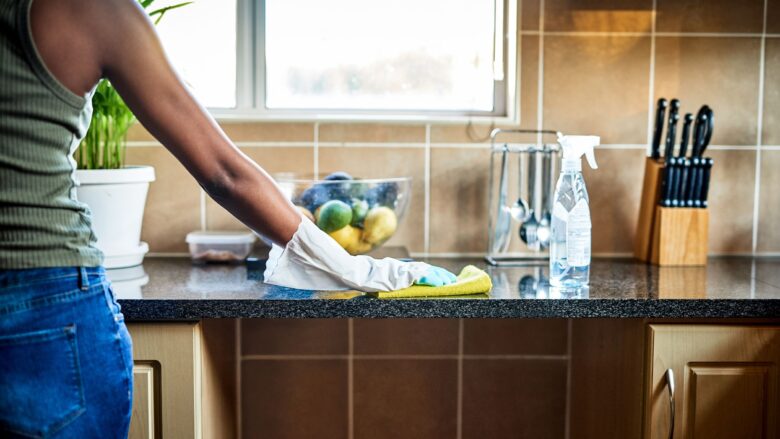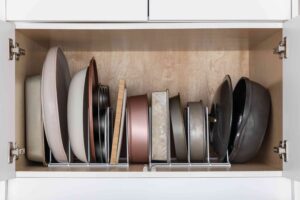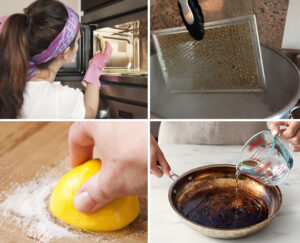Keeping your kitchen clean and safe is important to stay healthy and avoid getting sick from food. This guide covers six things you need to do to keep your kitchen clean and safe for food preparation. By doing these things you can keep your kitchen clean so that everyone who eats there can stay healthy.
1. Wash Your Hands Regularly
Washing your hands regularly is an important part of keeping your kitchen clean. Wash your hands with soap and warm water for at least 20 seconds before handling food, after handling raw meat, poultry, seafood, or eggs, and after taking out trash or pet care products. This simple but useful habit can help prevent the spread of bacteria and viruses that can make you sick from eating.
2. Proper Food Storage
To ensure food is safe to eat and to prevent cross-contamination, it is important to store food properly. To prevent juices from spilling onto other foods, raw meat, poultry, and seafood should be placed on the bottom shelf of the refrigerator in non-disclosure containers or plastic bags. Fruits and vegetables should be kept away from these raw foods. In addition, perishable foods should be immediately placed in the refrigerator or freezer and leftovers should be stored in airtight containers and consumed within three to four days.
3. Clean and Disinfect Surfaces Regularly
Countertops, cutting boards, and other utensils should be cleaned and disinfected before and after each use, especially when preparing different types of food. After cleaning the surface with soap and water, disinfect it with a bleach and water solution or kitchen disinfectant. This step is important to ensure the surface is safe for food preparation and to kill germs that could make you sick.
4. Suitable Cooking Temperature
To kill harmful bacteria, food must be cooked to the correct temperature. To ensure that meat, poultry, seafood, and egg dishes are safe to eat, you should always use a food thermometer. For example, chicken should be cooked internally to 74°C (165°F), ground meat should be cooked to 71°C (160°F), and steaks, chops, and roasts should be cooked to at least 145°F (63°C). °C), with three minutes rest time.
5. Avoiding Cross-Contamination
When harmful bacteria are transferred from one food to another, it is called cross-contamination. Many of these conditions can occur when raw meat, poultry, seafood, eggs, and other raw foods come into contact with ready-to-eat foods. Use separate cutting boards and tools for raw meat and other foods and wash them after each use. Do not place the cooked food back on the plate if it has not been washed with hot soapy water.
6. Proper Use and Maintenance of Kitchen Equipment
To keep things safe and working properly, kitchen appliances and tools need to be regularly maintained and used properly. This includes following the manufacturer’s instructions for regularly cleaning ovens, stoves, refrigerator coils, and other appliances. To avoid electric shock, keep blades sharp and store them safely. Also, keep devices away from wet areas.
Conclusion
By following these six tips for safely cleaning the kitchen, you can significantly reduce the risk of foodborne illness and make it a safer, friendlier place to cook and eat. Remember that a clean kitchen is important for your health and the enjoyment of good food. Maintaining these standards takes hard work, but the health benefits for you and the people you cook for are immeasurable.
FAQs
1. How often should you wash your hands while cooking?
Wash your hands thoroughly with soap and water for at least 20 seconds before handling food, after handling raw meat, poultry, seafood, or eggs, and after going to the bathroom, pet care center, or trash bin. In addition, you should wash your hands if they get dirty while cooking.
2. What is the best way to store raw meat in the refrigerator?
Raw meat, poultry, and seafood should be stored on the bottom shelf of the refrigerator in non-open containers or plastic bags. This prevents their juices from getting onto other foods. This method prevents cross-contamination.
3. How do you ensure that all surfaces in your kitchen are clean?
After cleaning kitchen surfaces with soap and water, use bleach and water (one tablespoon of unscented liquid chlorine bleach per quart of water) or a disinfectant made specifically for kitchens. After applying the solution, wait a few minutes and then wipe it off with a clean cloth or paper towel.
4. What is the safest temperature for cooking chicken and meat?
For poultry, the internal temperature should be 74°C (165°F); for ground meat, the temperature should be 71 °C (160 °F); for steaks, chops, and roasts the temperature should be at least 145 °C. F (63°C)). Then let the meat rest for three minutes.
5. What can I do to prevent stains from appearing in my kitchen?
Use separate cutting boards and utensils for raw meat and other foods. Wash these items in warm, soapy water after each use. Do not place cooked food back on a plate containing raw food if the plate has not been washed with soap and water.
6. How can I properly clean and maintain my kitchen tools?
Follow the manufacturer’s instructions for cleaning and maintenance. As part of regular maintenance, you should clean the coils in your refrigerator, descale your kettle, sharpen your blades, and ensure all appliances are kept dry and away from water.


